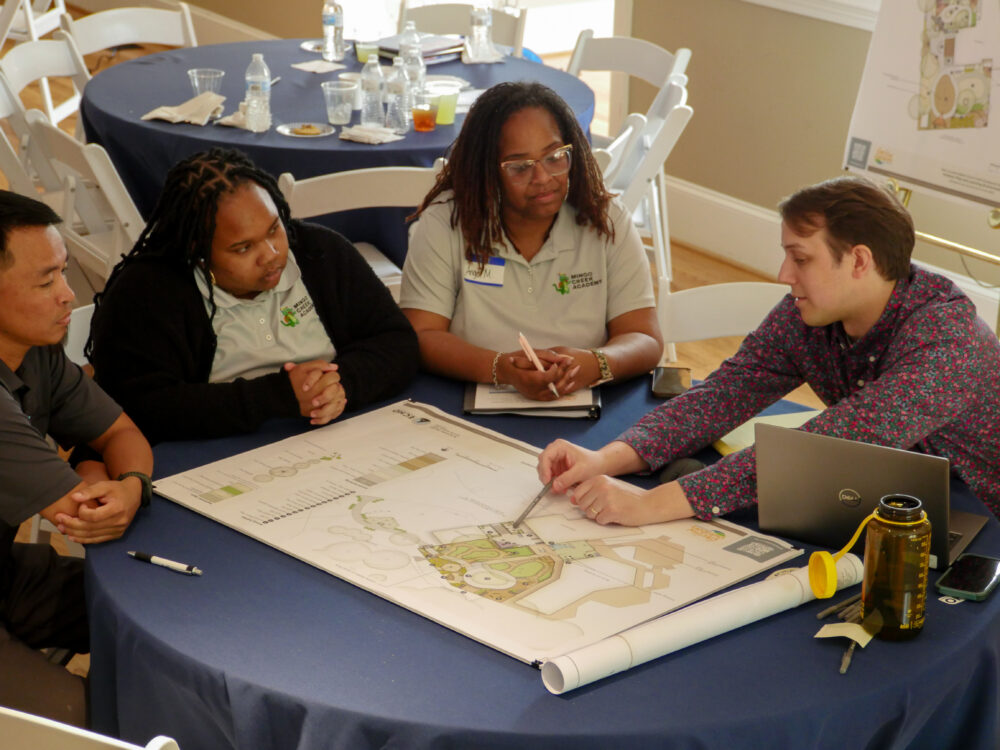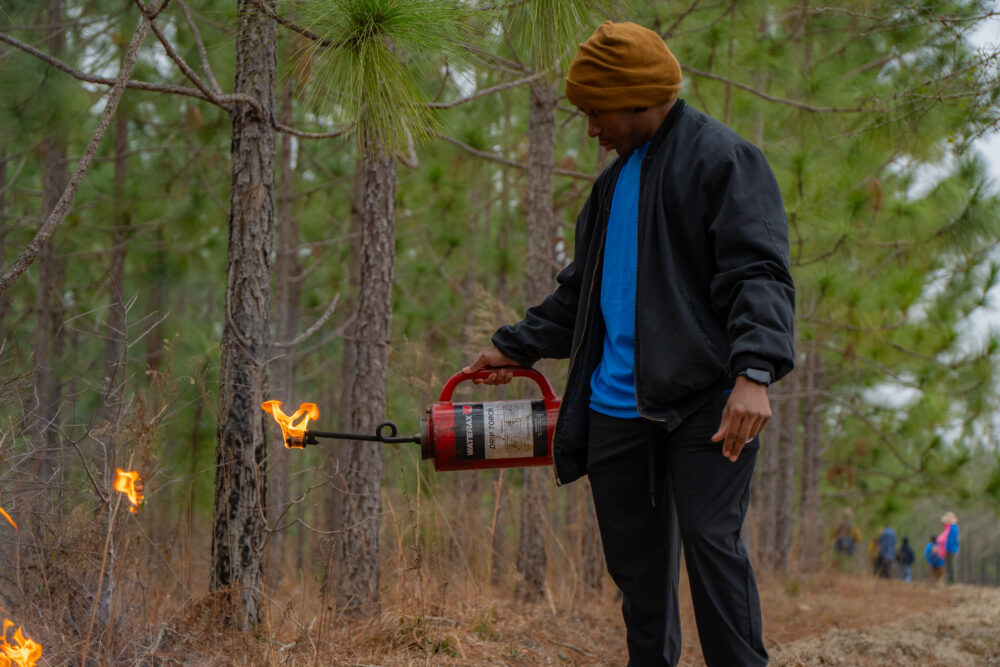We have much more to do and your continued support is needed now more than ever.
Welcome to the University, Here’s Your Green Guide
Smith College offers new freshmen a number of voluntary tracks in addition to the basic first week data dump that all students get. One of these tracks is designed for students who want to minimize their environmental impact on and off campus.
Each fall, professor David Smith takes 40 or so of the 600 incoming students on a walking tour of the campus and surrounding community. This includes short field trips to locations such as the city’s water sources, wastewater treatment facility and the college’s power plants – the ancient coal-fired boiler and the new high efficiency co-gen steam plant. “Personally visiting these places and meeting the facilities managers give the students an ecological sense of place,” he says. The program also addresses such basics to as how to recycle, how to travel around the area without a car, and what kinds of environmental courses and student organizations are options at Smith.
This comprehensive introduction to sustainability on campus for incoming freshmen is becoming more established, but it is not the norm.
The NWF Campus Environment 2008 national report card indicated positive movement in orienting students and faculty. Reporting campuses moved from a D to a C-, with one-quarter of the surveyed schools having an orientation session or publication about campus-focused sustainability or environmental programs. That’s about twice as many as in 2001. Another 33% say they plan to do more.
One might think that institutions involved with the President’s Climate Commitment would score high marks in this area. Yet AASHE’s STARS (Sustainability Tracking, Assessment, and Rating System) program, which is still in a pilot phase, notes that only 53 of 70 participants applied for credit for having an acceptable freshman sustainability orientation. And only half of those schools earned credit.
Most institutions that claimed this credit cited one or more of a similar set of programs they are using to make sure sustainability is incorporated into new student orientation activities:
- Distributing door hangers with energy conservation tips, welcome packets, emails, bookmarks, reusable tote bags made of recycled content that have information printed on them, green tips for back-to-school shopping
- Distributing environmentally preferable reusable water bottles or compact fluorescent light bulbs
- Offering tours of the institution’s biomass facility, campus garden, or recycling center
- Holding a discussion on sustainability broadly or a specific sustainability-related topic
- Conducting community service activities with sustainability themes
- Implementing sustainability strategies into the orientation’s operations such as zero waste events or making materials available online instead of printing them
- Training and orientation on how to buy ENERGY STAR products for the dorm, how to recycle, how to use the car share and bike sharing programs, and how to find sustainability-themed courses or use them to fulfill general education requirements
- Holding lectures and screening movies with sustainability themes
- The sustainability office having a presence at major orientation events
Several institutions that did not claim this credit reported that typically some information about sustainability was conveyed during new student orientation, but it was not formalized or part of an overall sustainability orientation. Others reported that some, but not all, departments included sustainability information in their own orientation sessions.
For some new recruits, indoctrination begins before orientation week even starts. Many colleges assign common reading over the summer. They use discussion groups to break the ice and help newly arrived students get to know one another and their soon-to-be faculty. In 2008, Rice University had a required reading of Field Notes from a Catastrophe: Man, Nature and Climate Change by Elizabeth Kolbert. Last year at Smith, it was The Green Collar Economy: How One Solution Can Fix Our Two Biggest Problems by activist Van Jones.
The University of North Carolina at Charlotte, like many schools, has a simple two-hour overview put on by the physical facilities staff as a standard part of its orientation week agenda. Topics include the school’s efforts in the areas of conservation, alternative energy production and waste management.
Other orientations are more hands-on. At Green Mountain College freshmen can spend the night around campfires and, monitoring meters, contrast their Spartan experience with the substantial electricity usage by colleagues in their gadget-filled dorms. Students will actually calculate their own personal carbon footprint over the four years, and are expected to take personal responsibility for their behavior.
Other “historically green colleges” including the University of Vermont, Oregon State, Unity, Carleton, Bowdoin and Berea have sustainability as a core mission, so when freshmen arrive, they get a full immersion into their school’s deep commitment and expectations of students attending.
Margo Flood, director of Warren Wilson College’s Environmental Leadership Center, doesn’t think this is too much ‘preaching to the choir.’ “While students do care deeply, not everyone understands the commitment needed to embrace sustainability consistently in all aspects of their lives,” she says. “We ask them to test their assumptions the day they arrive on campus.”





















